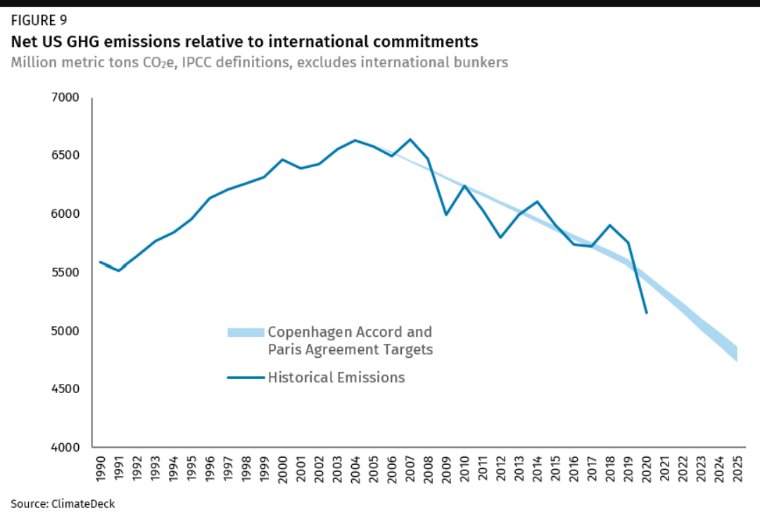
“This is a budget-based strategy as opposed to a regulatory-based strategy,” Sen. @TinaSmithMN on a Reconciliation-friendly Clean Electricity Standard that is part of the Budget framework agreed on by @SenateBudget Dems yesterday. More via @bstorrow eenews.net/articles/payme… & 🧵 

Broad contours of a Reconciliation-friendly Clean Electricity Standard (CES) are now coming into public view, as House & Senate Dems prepare a $3.5T Budget Resolution that will kick off a Reconciliation process, which permits passage of budget-related measures w/50+ Senate votes.
There are many important details to be worked out + negotiations must secure support of all 50 Senate Democrats to ensure passage, but Sen. @TinaSmithMN, who has championed this key clean energy measure, and a Budget Cmte outline of the $3.5T plan have revealed broad outlines...
1. The CES AIMS TO ACHIEVE 80% CLEAN ELECTRICITY BY 2030. Note that policy passed via Reconciliation can only run for 10 years unless it is revenue neutral/positive after year 10, so a 2030 or rather 2031 goal is as far as we can likely go. (This is in line with 100% x 2035 goal)
2. This CES is "a budget-based strategy as opposed to a regulatory-based strategy," as @TinaSmithMN notes. Reconciliation can only be used to pass policies that are budgetary in nature -- involve spending or revenue. This has lead to design of a novel approach to a CES...
...a novel approach to a CES which replaces regulatory mandates (as seen in 30 state RPS & CES policies) with FEDERAL INVESTMENTS. Utilities recieve financial payments based on how much new clean electricity they bring online each year, achieving same goals as regular order CES.
3. The CES makes federal investments in clean electricity -- via financial payments to utilities described above -- which, along w/clean electricity tax credits in the broader Budget framework, SHIFTS THE COST OF THE CLEAN TRANSITION FROM RATEPAYERS TO THE PROGRESSIVE TAX BASE.
This is really important so I'll stress it again: unlike a regulatory CES, which puts costs on ratepayers, this investment-based CES has the federal govt -- via taxes on corporations & the wealthy -- pick up the tab. That makes this more progressive/just than a conventional CES.
4. The CES embraces principle that utilities "start the race where you’re at, and you run at the same pace," a concept @TinaSmithMN's staff developed in their 'regular order' CES introduced last Congress. EACH UTILITY STARTS WITH CURRENT CLEAN SHARE & ADDS NEW CLEAN EACH YEAR.
This is important & reflects wide diversity of positions utilities across nation find themselves in. Some are mostly clean already, others are getting started. The latter won't be penalized under this policy. All will make forward progress, adding clean energy across the country.
Not every utility will be required to reach 80% by 2030, as in a traditional CES. Some will exceed 80%, others will be below. The investment-based CES is designed to provide financial incentives for all utilities to add clean and get the country as a whole to that 80x30 goal.
5. The CES IS TECHNOLOGY NEUTRAL, meaning that all low-carbon electricity sources can compete & contribute to the national goal of 80% by 2030. That includes wind, solar, geothermal, nuclear, and fossil fuels or biomass with carbon capture. It's all hands on deck to reach 80x30.
Tech neutrality is important because it means ALL clean resources can contribute & utilities have flexibility to select cheapest portfolio of clean & reliable resources. That includes clean firm power sources like geothermal, nuclear, H2 & CCS which can replace gas & coal plants.
Some on Left are concerned RE CCS & nuclear in CES. To those I say: these have to outcompete clean, cheap & mature renewables. And without a policy to reach 80% clean electricity by 2030, we will FAIL to reach 50+% US-wide reductions. We will FAIL to confront the climate crisis.
To moderates like @Sen_JoeManchin who champion innovation to clean up fossil energy & ensure its future, I say: this is the chance you've been waiting for. This CES is about eliminating emissions, NOT fossil energy. A CES + 45Q, SCALE & CATCH Acts is the chance to make CCS real.
This investment-based CES is pivotal to U.S. climate & economic goals. It's our best & only shot at passing a transformative policy that would set US electricity sector on path to 100% clean, create 100s of thousands of jobs, and avoid 10s of thousands of pollution-related deaths
• • •
Missing some Tweet in this thread? You can try to
force a refresh






